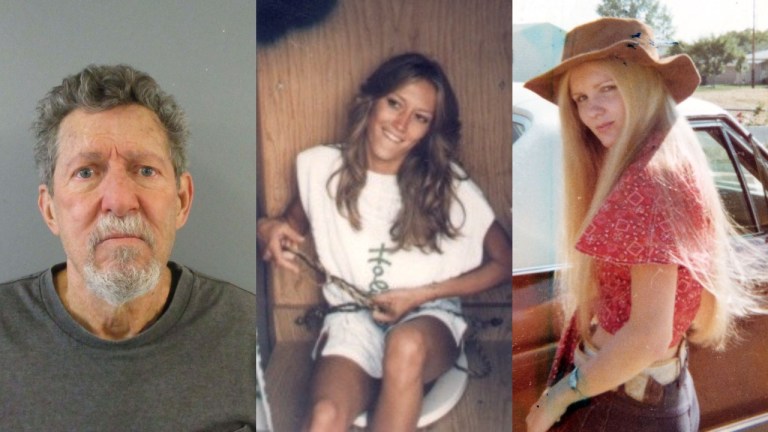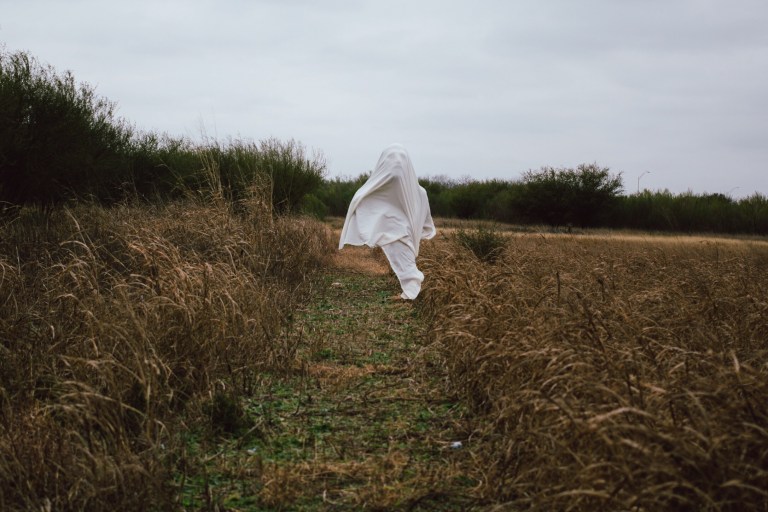
I Found Out The Dark Secret My Town Has Been Hiding Since The 1930s

I’ve been working for our town’s little one-room for over 20 years now. You know what’s difficult about being a small town librarian? There are no children’s librarians, no reference librarians. All the jobs in the library fall onto my shoulders, from designing summer reading programs to doing genealogical research for patrons.
That last one is important. That last one is where our story begins.
As a child, I helped my mother do genealogical research for our own family. She showed me all the tricks of the trade and by the time I became a librarian, I’d already helped a lot of people back in my own hometown discover their family roots.
A few weeks ago, I got an email from out of state, a woman in Oklahoma who was looking for a headstone. This is a pretty typical request: Someone can pinpoint the area or even the town their ancestors came from, that’s easy. But do you know how hard it can be to find a grave if you don’t know the plot number or have access to the records? First of all, most towns have more than one cemetery. Even our little town of 1,000 people has two cemeteries. If the grave is old enough, the writing might be mostly worn away. Without the proper or digital records, it can take hours or even days to find a grave.
So I’m the grave finder.
The first thing I do is try to find all the information I can on the person. Sometimes the patron is able to give me a lot of information: Birth dates, death dates, maiden names, etc. Sometimes they can only give me a name and that’s it. In this case, she gave me all the genealogy she had done up to that point, along with the name: Richard Stirler. Along with the grave, she wanted any information I could find on Richard’s life in this area. I was pretty excited to start: This kind of research is one of the most fun things about my job.
As luck would have it, Richard was a property holder, so a trip to the county courthouse to look at the records from the early 1900s (the approximate time period she gave me) turned up a hit on a farm just outside city limits. Perfect.
![]()
It turned out that Richard had owned the farm from about 1918 until his death in 1934. The property was auctioned off a few years later in 1938. Strange that it had taken so long…if he had no next of kin to pass the property on to, then why wasn’t it sold immediately? This was getting good.
Next I went through the microfilm of the old town newspapers. I started at 1918 and worked forward, looking for any mention of Richard and the farm. The nice thing about a small town is that nearly every incident, no matter how tiny, is recorded with precision.
Around 1921, I started seeing Richard’s name, but it wasn’t where I expected. It was in the section on police reports, and Richard was being arrested every few months for possession and making of moonshine. The only other mention of him came in 1934 with his obituary. It was pretty nondescript and didn’t mention any family or friends.
I scoured the newspapers one more time but didn’t find anything else of note. Fortunately, I had an inside connection, so I filed away the relevant information and reminded myself to make a phone call later.
All right, on to the cemetery records. Actually, finding Richard’s grave was easy enough: he was located in the main cemetery just outside of town. It’s just down the road from the Catholic cemetery and markedly bigger. He was on the west end. I wrote down the plot number and continued to look through the records to see if he had any other family buried there, probably someone who had died before him.
To my surprise, I found that he’d purchased another plot. He’d purchased it in 1921 and it had had some repairs done in 1929. Weird, right?
That about covered it for my research. I decided my next move was to check out the cemetery. The woman who emailed me wanted a picture of Richard’s grave along with the location. I’d get the picture and then I could check out the other plot he’d bought.
Finding Richard’s grave was as easy as I’d imagined, although I couldn’t read any part of the inscription. No one had taken care of the grave in years. It sort of looked like a horror movie grave: Crumbling and cracked and covered with moss. I snapped a few pictures and set off looking for the other grave.
The mysterious grave Richard had bought was even further west at the edge of the cemetery, surrounded by graves much like Richard’s: Old and decrepit. But this headstone was significantly different. It still looked new, with no cracks, moss, or anything else. As I got closer, I realized that it didn’t look stone at all.
A few knocks on the side confirmed my suspicions. It was metal. And not only was it metal, it was hollow on the inside.
I got in touch with the cemetery caretaker, a guy named Andrew Jones. He’s been working at the cemetery since the late 50s, a bit after Richard’s time, but since Andrew inherited the job from his father, I was hoping he’d have some information on the stone.
“Oh, that old stone? That’s an interesting story, Meredith,” Andrew said. His gravely voice crackled in over the phone and I had to struggle to hear him. “The guy who bought it, that Stirler, he had a moonshine operation in the twenties during prohibition. But you probably already know that,” his laugh cracked like a whip and I found myself wishing he would just get on with the story. “Right, anyway, that’s a fake grave. The panels on the side used to open up. Potential buyers would put the money in the headstone. Stirler would come that night and switch it out with his moonshine. The repairs we recorded are from when my father sealed the panels. Prohibition ended and so did Stirler’s business, so they weren’t needed anymore.”
“But didn’t anyone notice the headstone? Or was Richard was doing?” I couldn’t really fathom that: Going nearly 10 years without a single person noticing the whole operation.
“Oh, sure, everyone in town knew about it. Hell, Stirler’s biggest buyer was the sheriff!”
“What?!” My mouth hung slack. This was just the type of drama that I loved finding out about.
“Ayup,” Andrew went on blithely, clearly enjoying filling me in on the juicy details. “That’s how Stirler managed to stay in business so long. He and the sheriff had an understanding. Sure, the sheriff would arrest him once every few months, but it was just for show. He’d let him out of the tank a few days later and Stirler’d go right back to work. Sure used to drive his wife crazy, though.”
“Who, the sheriff’s?”
“No, Stirler’s…” Suddenly Andrew stopped. “Oh, I guess I’m thinking of someone else. Sorry about that. Forget I said that.”
I tried to get more information out of Andrew, but he kept his lips stubbornly sealed. I hung up more confused than ever. None of the newspaper stories ever mentioned Richard having a wife. If he’d been close to any sort of family, it definitely would have been in the obituary.
Luckily, I had an ace up my sleeve. I made the call I’d been thinking about since my trip to the courthouse earlier that day, the call to my “inside connection”.
![]()
The most valuable tool in conducting research is the elderly. For some cases, they really can’t help: If I’m researching something from the mid-1800s, for example. In other cases, they provide valuable eyewitness accounts that no one else can. Unfortunately, a lot of the older people in small towns won’t talk about their community’s darker history – they feel as though they have to protect the town’s reputation by burying the past with their fast-fading bodies. A few of them, however, understand the importance of preserving history as it is, no matter how ugly or frightening.
One such woman is Taalke Klinkenberg. At 94-years-old, she’s still sharp as a tack and has been filling me in on the darker side of our town’s history for the past ten years. Although she’s lived in the town her whole life, she’s never harbored any warm feelings for its inhabitants. “This town has a lot of sick people in it, Meredith,” she once told me. “A lot of sick people and a lot of sick stories. And people shouldn’t forget that kind of sickness.”
So I called Taalke and we made an appointment for the next day. I headed over to her house – so old and she still lives in that big house down on Fifth Avenue all by herself. I don’t know how she does it.
Anyway, as soon as I brought up Richard’s name, her eyes started to shine and she leaned forward in her old armchair. That’s how I knew this would be a good story.
“Well, now, I was just a baby during Prohibition, but I heard a lot about Richard Stirler once I grew up a little. My father was working in the police department at the time, and, well, I don’t mind telling you that he was a regular buyer of Stirler’s. But as I got older, I heard him say that something was wrong with that man.
“I’m not surprised that Mr. Jones wouldn’t tell you about his wife and child. You see, Richard and Rosemary had been married for just a few years when he bought that property. And after he bought it, he started acting really funny. He was sort of strange to begin with, you know, but after he started making moonshine things got worse. The strain on their relationship was even stronger after Rosemary had her baby boy – Peter, I think they named him. Anyway, about a year after Peter was born – I think that would have been 1924? – Rosemary up and left. Took Peter with her and just walked out overnight. Richard never heard from her again. He really went south after that. I remember my father talking about it just after Richard killed himself. That was the final straw, he said. Sure, he lived for about ten years after she left him, but he never really recovered. He was sort of a dead man walking. My father used to say that Richard really died in 1924 and wasn’t buried until 1934.
“Personally, I always thought it was cruel of Rosemary to leave Richard. When you marry someone, you make a commitment to them, no matter what happens. Richard may have had his problems, but she should have stayed by his side and supported him.” She leaned back in her seat, satisfied with her story, and sipped at her coffee. “That’s my two cents, anyway,” she added as an afterthought.
I had a slightly different opinion, but I kept it to myself.
Well, now I had the story, and everything made sense. No mention was made of the wife or child in his obituary because they’d left. Richard had run a moonshine operation and he’d purchased the headstone for business. He killed himself because he could no longer handle the loneliness. No loose ends, no real mystery.
But something didn’t feel right.
And I decided to investigate some more.
I wasn’t sure where to start until a question came bubbling up in my brain: Why would they seal the headstone? Sure, they didn’t have a use for it after prohibition, but why take the time and effort to actually seal it? I figured it was to ensure it wasn’t used again, or maybe so that local kids wouldn’t mess with it, but my curiosity gnawed at me and I decided I was going to check it out for myself.
![]()

![]()
I decided to go after dark. Cliché, I know, but that way I didn’t have to worry about Andrew coming out to see what I was doing – he’d be dead drunk by then and wouldn’t notice my flashlight bobbing around the darkness. I’d also have plenty of time to do my investigation.
I crept out to the west end of the cemetery with my tools and flashlight. Luckily for me, the panels had only been bolted on, so they were easy enough to remove with a wrench and a few hard tugs. A few minutes later, I’d removed the bolts and had my hand on the panel. My heart was pounding hard as I removed it gently. I knew there probably wouldn’t be anything behind it, but I was still nervous as hell.
I was plenty surprised when the smell hit me.
You know, it had been nearly a hundred years since that headstone had been sealed. A hundred years of no air, no light, no nothing. So whatever had rotted in there had left a pretty wretched mess, along with a smell that had been fermenting for nearly a century. I leaned over and tried to hold my supper as my stomach heaved. A squirrel or something must have gotten caught in there when they sealed it. Disgusting.
But I knew that wasn’t the case. Somewhere inside me I knew that I had to take another look.
I had a pair of heavy gloves in my toolkit, so I put them on and reached inside, trying to remain calm and not blow chunks. My hand grasped something thin and brittle and I figured I’d found the body of whatever unfortunate rodent had decayed in there.
Except it was too big to be a rodent and I knew that.
I pulled it out and let out a cry, a painful cry as I finally had to acknowledge that the skeleton was that of a baby. A human baby. Tears slipped down my face and my stomach lurched once again as I realized that I was holding Peter.
I had no idea what to do. When you find something like that, how do you react? I put the body back in the headstone and bolted the panels back on. I needed time to think. In fact, that’s what I’m doing right now as I write this out. I hate to leave that poor child in there, but what else can I do?
I should tell someone. But who do I tell? It’s about a hundred years too late. But doesn’t his remaining family have a right to know? He may only be tangentially related to the woman who emailed me, but she would want to know, right? Or wouldn’t she? How long has she searched for Rosemary and Peter? Has she searched at all? Did she even know about them in the first place? Does Andrew know? Did his father?
As I sit here, chugging my third beer, this awful thought keeps surfacing through all of these questions: is that grave really empty, or is someone in there?
Rosemary…











